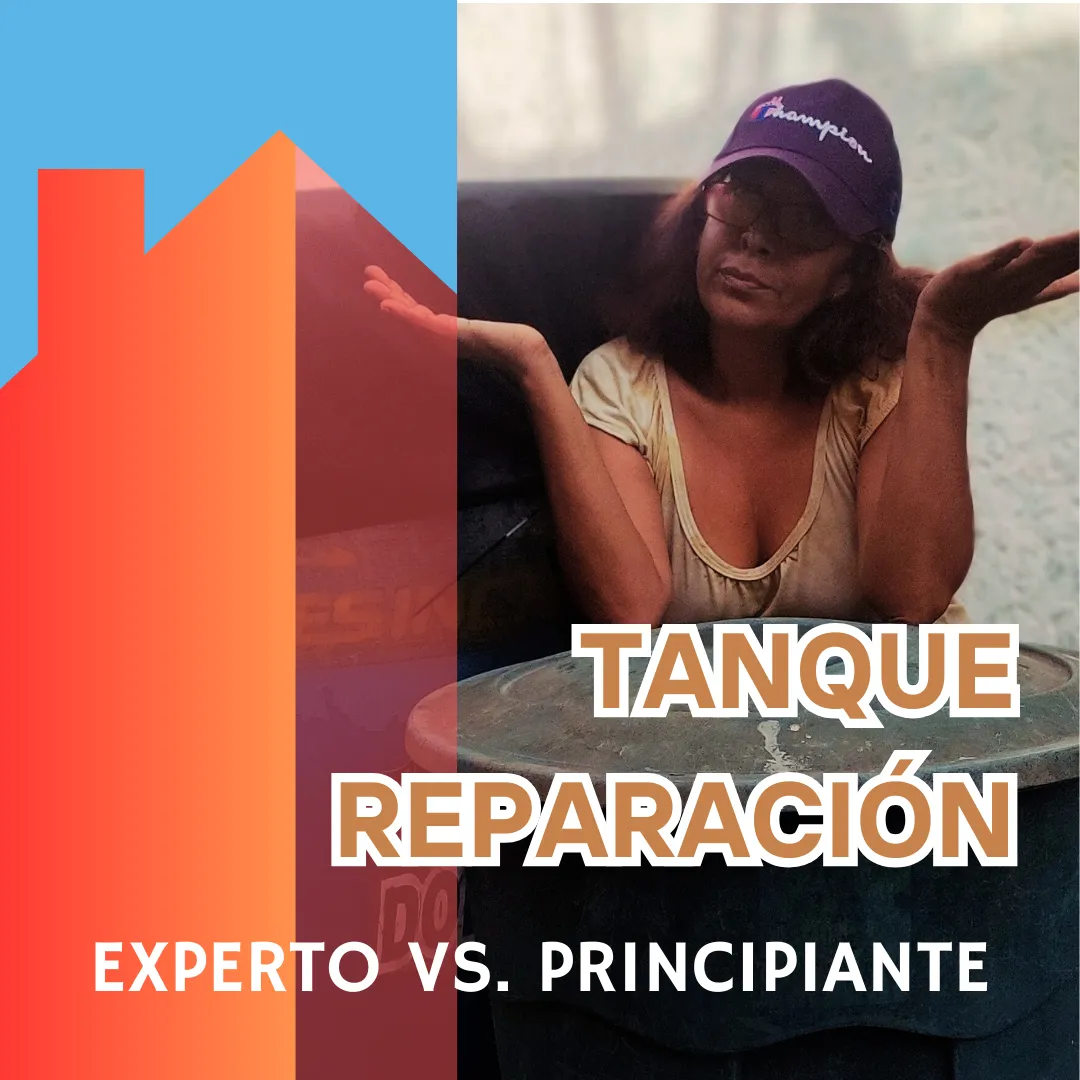
Feliz vida en total armonía con el Universo para todos. Hablando de armonía, si hay algo que nos la proporciona, es poder contar con los servicios públicos básicos, como la electricidad y el gas, pero definitivamente poder disfrutar de agua es lo más esencial. Como dice el dicho popular, el agua es vida. Pero ya sabemos que es uno de los recursos naturales más escasos, especialmente en algunos países. Por ejemplo, en Charallave, Edo. Miranda, Venezuela, donde yo vivo, recibimos este servicio cada 15 o 21 días, lo cual implica contar con tanques y envases reservorios de todos los tamaños.
Por lo general el material de estos contenedores es plástico, aunque existen de fibra de vidrio o elaborados con materiales construcción. En mi caso, les cuento que tenía el tanque tradicional de plástico color azul, con capacidad para mil cien litros. Desde que lo compré, hace más de 13 años estuvo ubicado en el techo de mi casa. A la intemperie. Como se podrán imaginar, el paso del tiempo y las inclemencias del clima, han ocasionado que se haya deteriorado y que haya comenzado a fugar, lo cual se convirtió en una pesadilla para mí. De por sí, con el tanque en buenas condiciones, se hacía toda una hazaña rendir esos mil cien litros entre las semana sin suministro. Así que al tener esa perdida de agua, nos quedábamos “secos” mucho antes del siguiente ciclo de distribución.
Estuve unos meses en esa situación de zozobra, hasta que mi hermano, generosamente me regalo uno nuevo de la misma capacidad. Pero como ya les comenté, mil cien litros se hacian insuficientes. Así que me plantee la posibilidad de reparar el tanque viejo. Sin embargo tenía temor que al desmontarlo, terminara por partirse. Además me surgieron otras dudas: ¿cómo arreglarlo?, ¿cual material usar? ¿quién lo sabría hacer? Bueno. A pesar de estas inquietudes busqué a la persona que en su momento instaló el primer tanque. Él es ese típico señor que sabe reparar casi todo, que además es albañil o jardinero. Un “todero”. Efectivamente, era el indicado para el trabajo. Quitó el tanque roto. Me indicó los material para repararlo. Y por supuesto colocó el nuevo, en su santo lugar.
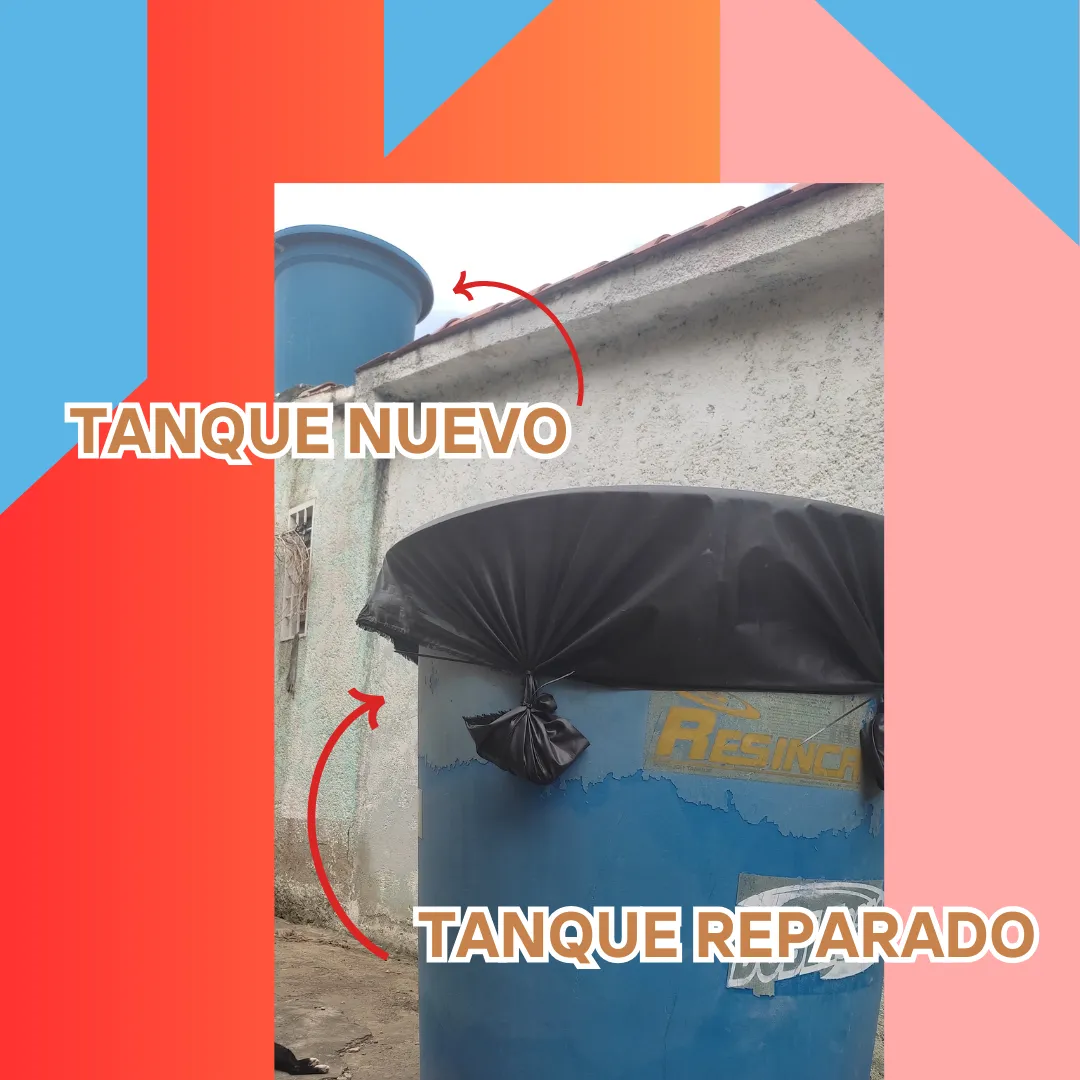
Lo único que yo debía comprar era una pega epóxica muy conocida (PegaTanke). Sin embargo, la reparación no solo consistía en pegar. Sino que previamente se debía “coser” las fisuras. Para ello, utilizó algunas fibras de cobre del interior de un trozo de cable de electricidad usado, que tenía yo en casa. Con un clavito delgadito, que él mismo sacó de la pared, abrió orificios a ambos lados de las roturas. Por allí pasó los hilos de cobre con una delicadeza de cirujano estético. Luego de entorchar los alambres, procedió a cubrir el área con la pega. Al secar ya tendría un tanque de repuesto. Y así fue.
Posteriormente, yo le coloqué como refuerzo, una cinta adhesiva que un amigo me regalo, y que tambien se usa, aparentemente, para cubrir roturas de este tipo. La puse tanto por dentro como por fuera. Lo cierto es que al siguiente día pude llenarlo perfectamente. Sin embargo, dos días después, apareció una fuga mínima, como una gota. Entonces yo misma la cubrí con la cinta adhesiva. De esto ya hace casi dos mes, y hasta ahora no ha filtrado por ningún lado. A pesar de sus años de servicio, el viejito sigue vivo. Se le dió una segunda oportunidad. Ahora tengo 1 tanque principal y otro de repuesto.
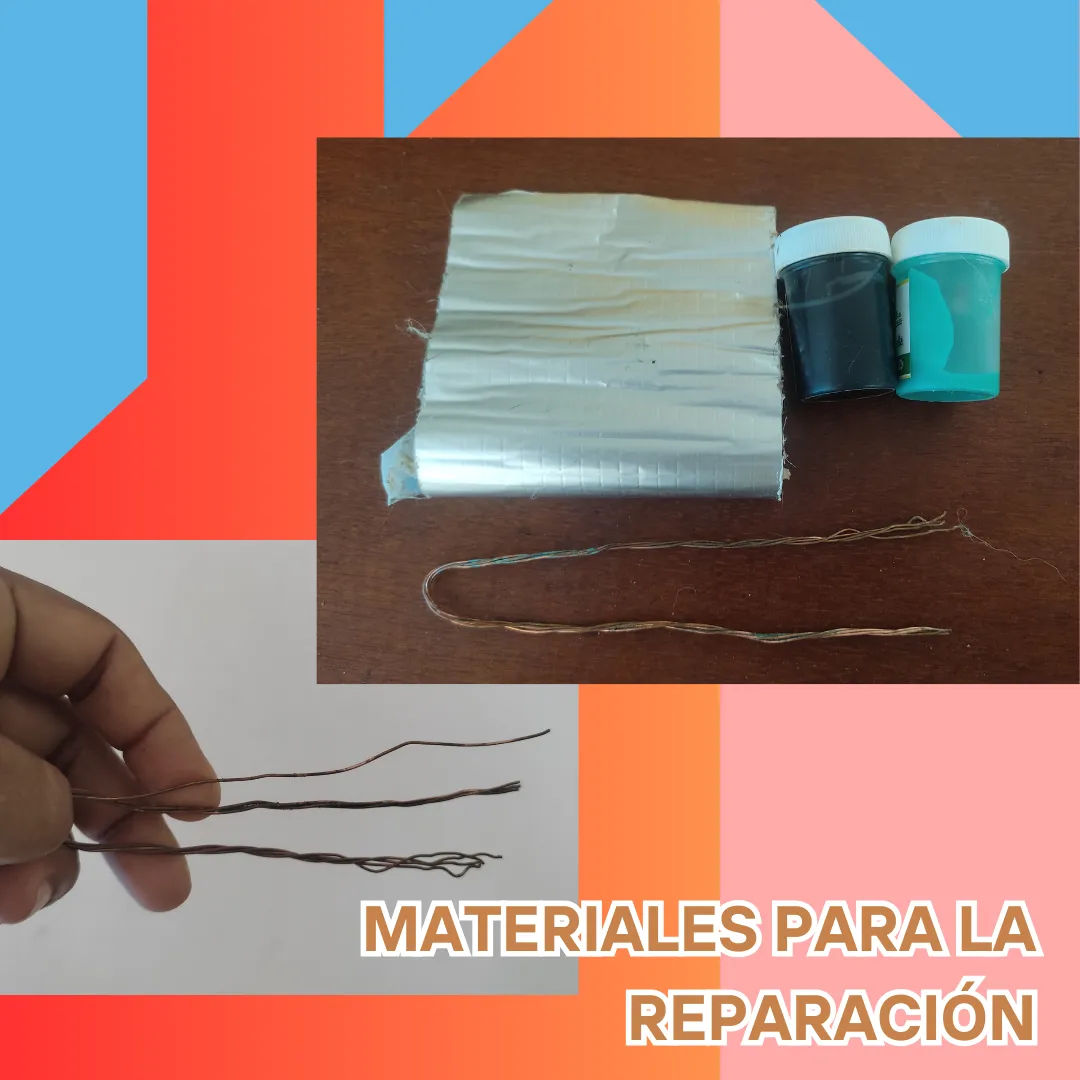
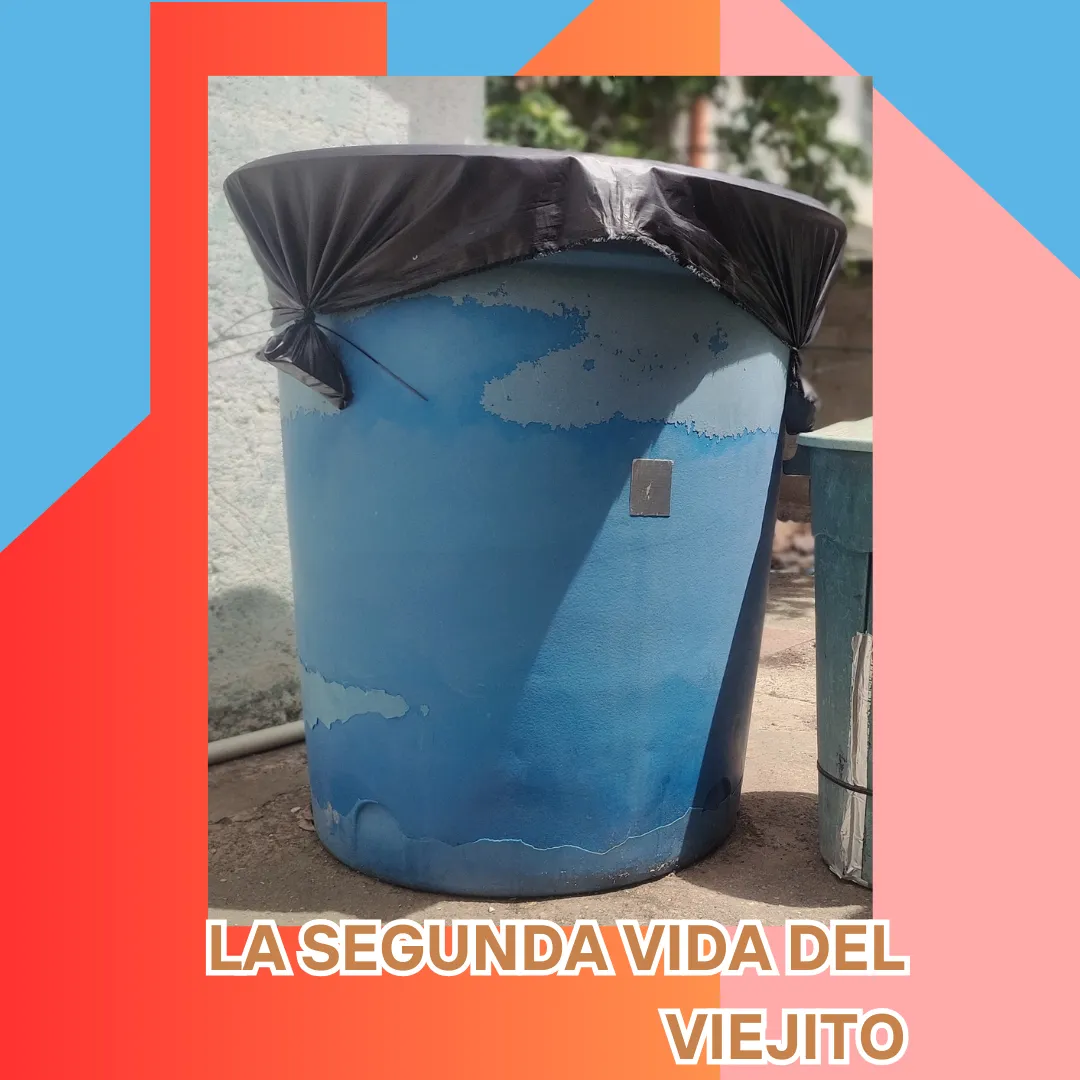
Para concluir les recomiendo que si están en una situación similar, busquen a alguien que sepa hacer el trabajo. Esa es la principal garantía de éxito. Sé los digo porque luego, por mi cuenta, intenté reparar un tobo de agua con capacidad como para ciento cincuenta litros. Fue un desastre. No tenía idea como “coser” las rajaduras, así que no lo hice. Sino que solo use la pega y la cinta adhesiva. Ah y para “asegurar” que cuando lo llenara, no se expandiera, le até una especie de cinturón. No les digo más. La presión del agua no solo abrió las fisuras, sino que las hizo más grandes. Junto con el agua perdí mi orgullo. Errores de principiante.
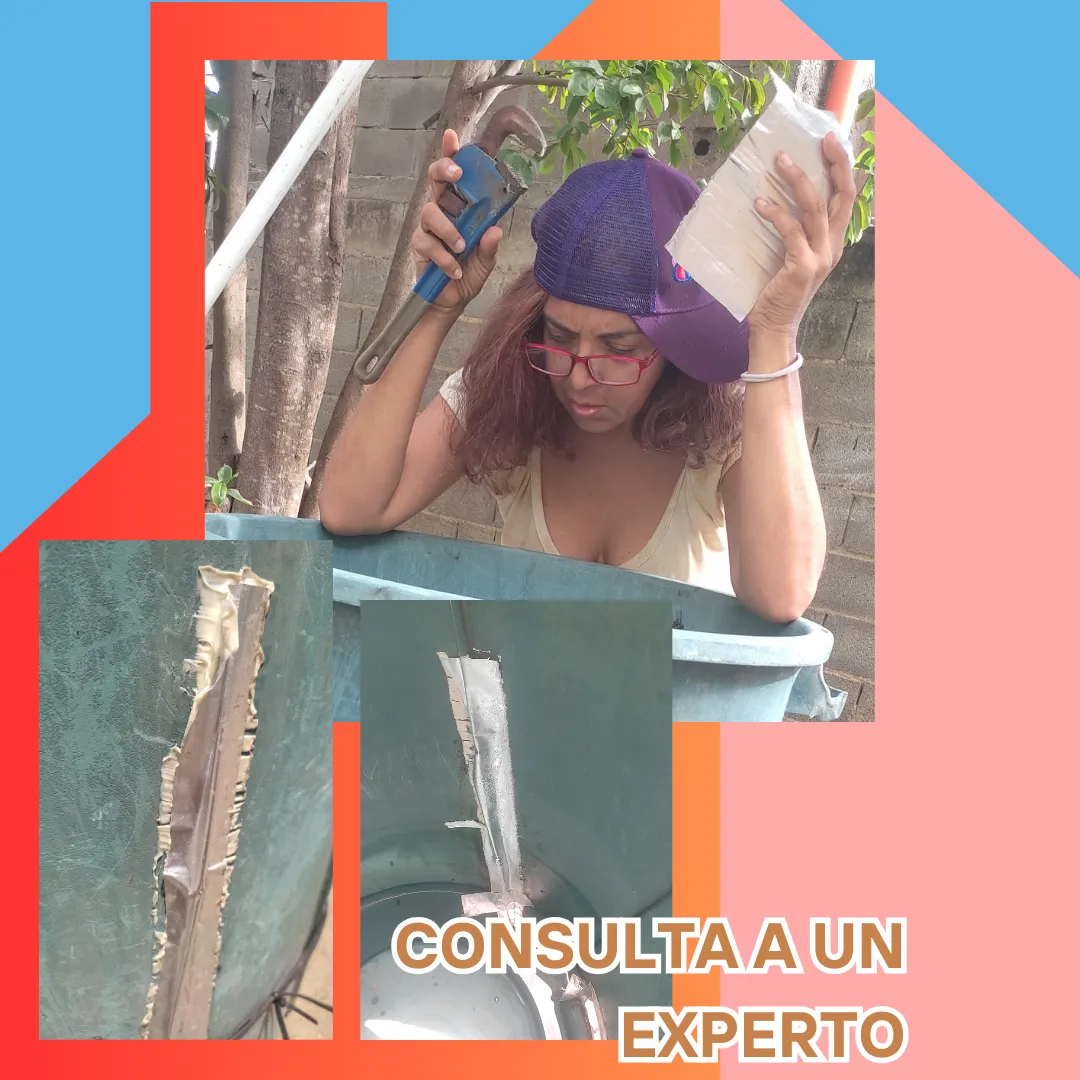
Gracias por leerme y espero verlos muy pronto.


Happy life in total harmony with the Universe for everyone. Speaking of harmony, if there is something that provides us with it, it is being able to count on basic public services, such as electricity and gas, but definitely being able to enjoy water is the most essential. As the popular saying goes, water is life. But we already know that it is one of the scarcest natural resources, especially in some countries. For example, in Charallave, Edo. Miranda, Venezuela, where I live, we receive this service every 15 or 21 days, which implies having tanks and reservoir containers of all sizes.
Generally the material of these containers is plastic, although they are made of fiberglass or made with construction materials. In my case, I tell you that I had the traditional blue plastic tank, with a capacity of one thousand one hundred liters. Since I bought it, more than 13 years ago it was located on the roof of my house. Out in the open. As you can imagine, the passage of time and the inclement weather has caused it to deteriorate and begin to leak, which became a nightmare for me. In itself, with the tank in good condition, it was quite a feat to deliver those eleven hundred liters during the week without supply. So by having that loss of water, we were left “dry” long before the next distribution cycle.
I was in that situation of anxiety for a few months, until my brother generously gave me a new one of the same capacity. But as I already told you, eleven hundred liters were insufficient. So I considered repairing the old tank. However, I was afraid that when I took it apart, it would end up breaking. I also had other doubts: how to fix it? What material to use? who would know how to do it? Well. Despite these concerns, I looked for the person who installed the first tank at the time. He is that typical man who knows how to repair almost everything, who is also a bricklayer or gardener. A handyman. Indeed, he was the right one for the job. Removed the broken tank. He told me the materials to repair it. And of course he placed the new one in its holy place.

The only thing I had to buy was a well-known epoxy glue (PegaTanke). However, the repair was not just about gluing. But previously the cracks had to be “stitched”. To do this, he used some copper fibers from inside a piece of used electricity cable, which I had at home. With a thin nail, which he himself took out of the wall, he opened holes on both sides of the breaks. There he passed the copper wires with the delicacy of a cosmetic surgeon. After twisting the wires, he proceeded to cover the area with glue. When it dried I would have a spare tank. So it was.
Subsequently, I placed, as reinforcement, an adhesive tape that a friend gave me, and which is also used, apparently, to cover breaks of this type. I put it both inside and out. The truth is that the next day I was able to fill it perfectly. However, two days later, a minimal leak appeared, like a drop. Then I covered it myself with the adhesive tape. This has been almost two months ago, and so far it has not leaked anywhere. Despite his years of service, the old one is still alive. It was given a second chance. I now have a main tank and an extra tank.

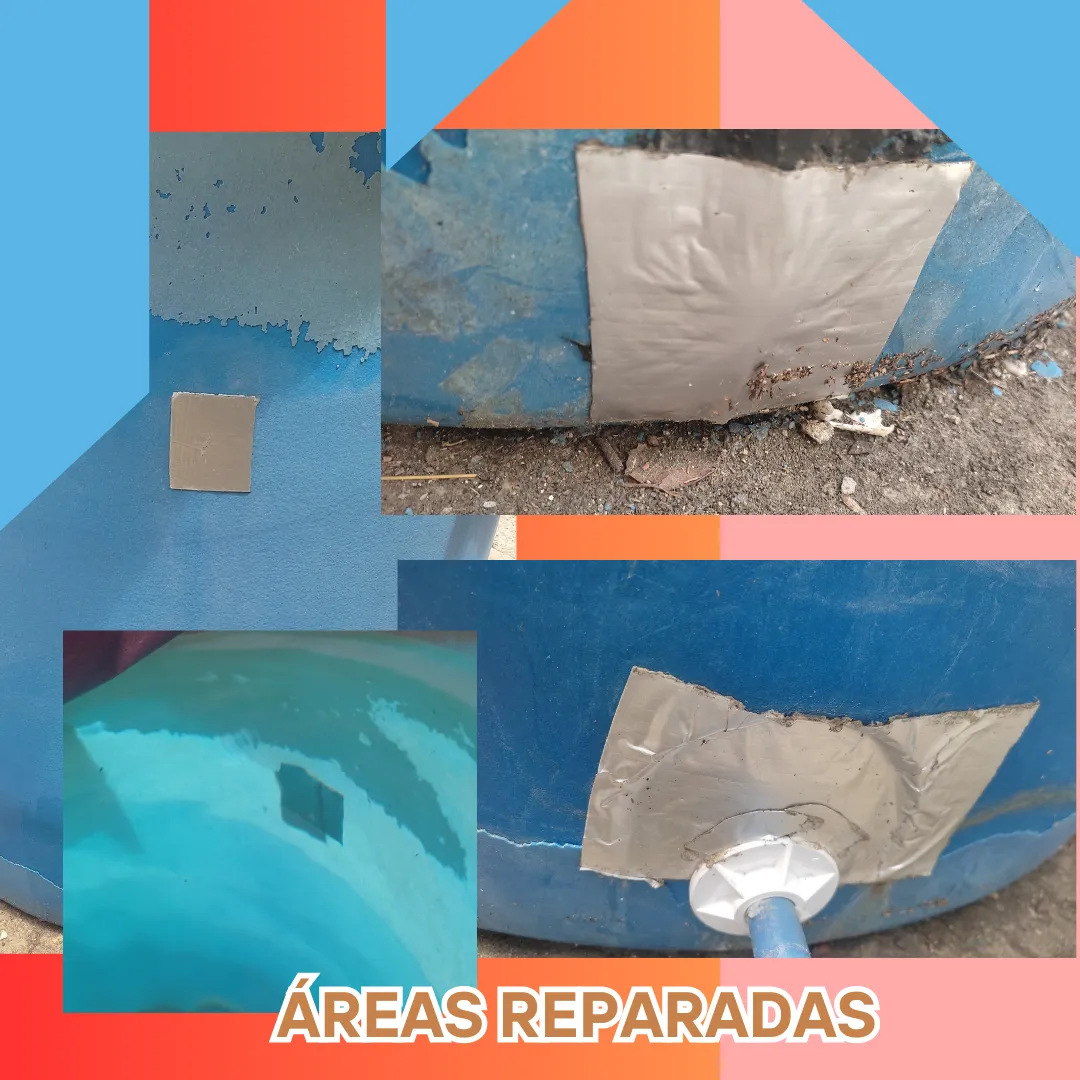

In conclusion, I recommend that if you are in a similar situation, look for someone who knows how to do the job. That is the main guarantee of success. I know I say this because later, on my own, I tried to repair a water pipe with a capacity of about one hundred and fifty liters. It was a disaster. I had no idea how to “stitch” the cracks, so I didn't do it. But just use glue and tape. Oh, and to “ensure” that when I filled it, it didn't expand, I tied some kind of belt to it. I won't tell you more. The water pressure not only opened the cracks, but made them larger. Along with the water I lost my pride. Beginner mistakes.

Thank you for reading and I hope to see you very soon.

Contenido de mi propiedad
Fotos de mi propiedad, editadas en Canva
Traducción propia, con apoyo de google translate
Content I own
Photos of my property, edited in Canva
Own translation, with the support of google translate